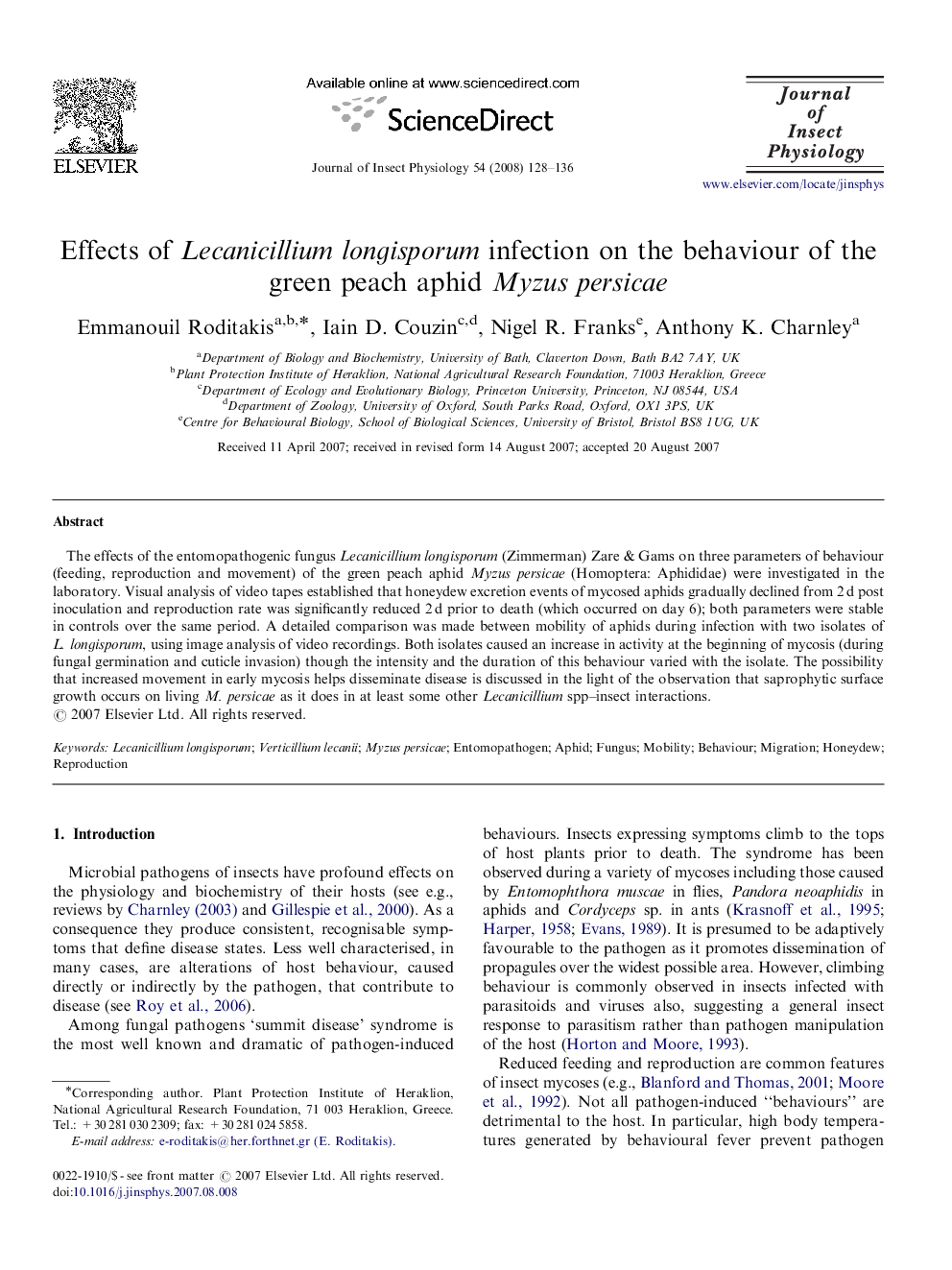| Article ID | Journal | Published Year | Pages | File Type |
|---|---|---|---|---|
| 2841423 | Journal of Insect Physiology | 2008 | 9 Pages |
Abstract
The effects of the entomopathogenic fungus Lecanicillium longisporum (Zimmerman) Zare & Gams on three parameters of behaviour (feeding, reproduction and movement) of the green peach aphid Myzus persicae (Homoptera: Aphididae) were investigated in the laboratory. Visual analysis of video tapes established that honeydew excretion events of mycosed aphids gradually declined from 2Â d post inoculation and reproduction rate was significantly reduced 2Â d prior to death (which occurred on day 6); both parameters were stable in controls over the same period. A detailed comparison was made between mobility of aphids during infection with two isolates of L. longisporum, using image analysis of video recordings. Both isolates caused an increase in activity at the beginning of mycosis (during fungal germination and cuticle invasion) though the intensity and the duration of this behaviour varied with the isolate. The possibility that increased movement in early mycosis helps disseminate disease is discussed in the light of the observation that saprophytic surface growth occurs on living M. persicae as it does in at least some other Lecanicillium spp-insect interactions.
Keywords
Related Topics
Life Sciences
Agricultural and Biological Sciences
Insect Science
Authors
Emmanouil Roditakis, Iain D. Couzin, Nigel R. Franks, Anthony K. Charnley,
